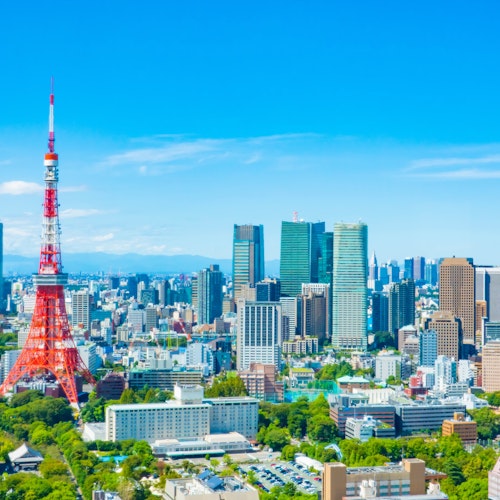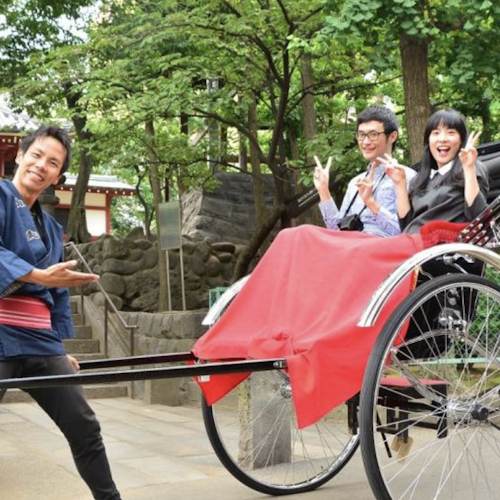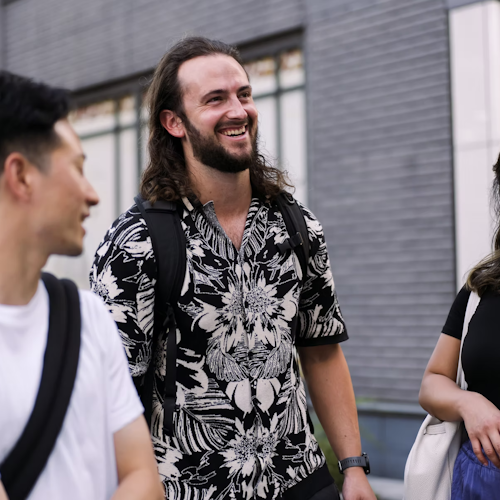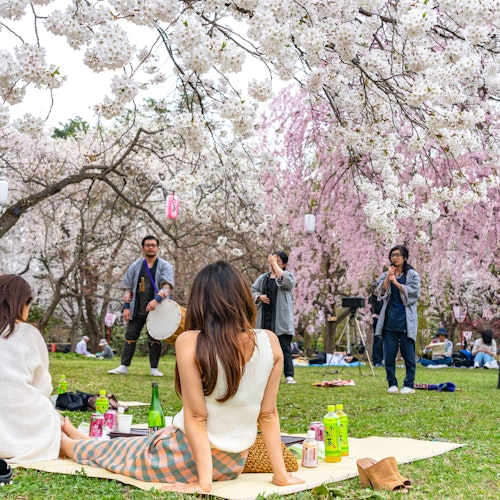
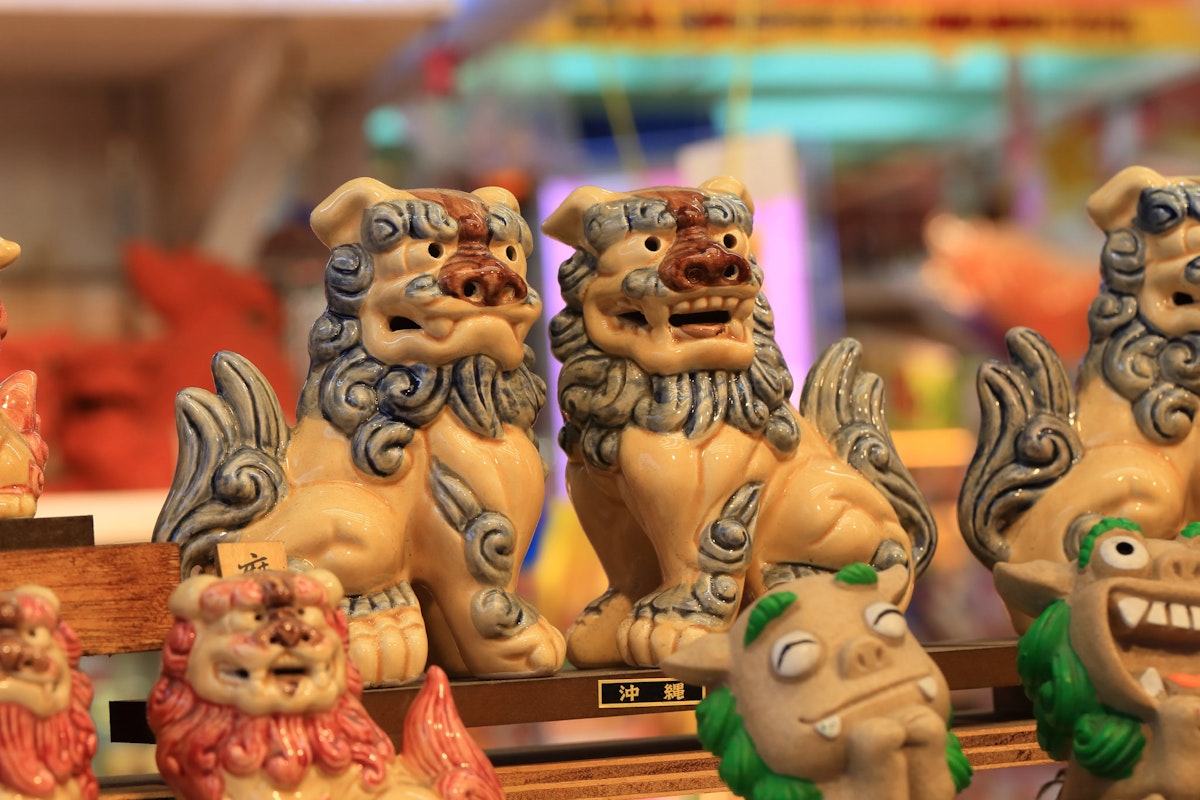
The mythical Shisa of Okinawa is an iconic protection and cultural heritage emblem. These guardian lions, rooted deeply in the history and mythology of the Ryukyu Islands, serve as a spiritual shield against evil spirits.
Shaped from lore and stone, these figures are often seen perched on rooftops and gateways; their fierce expressions are believed to ward off evil forces. Whether cast as small souvenirs or monumental statues, Shisa resonates deeply within Okinawan culture and beyond.
In this exploration, we delve into their storied past, diverse representations, and lasting impact on locals and visitors alike.
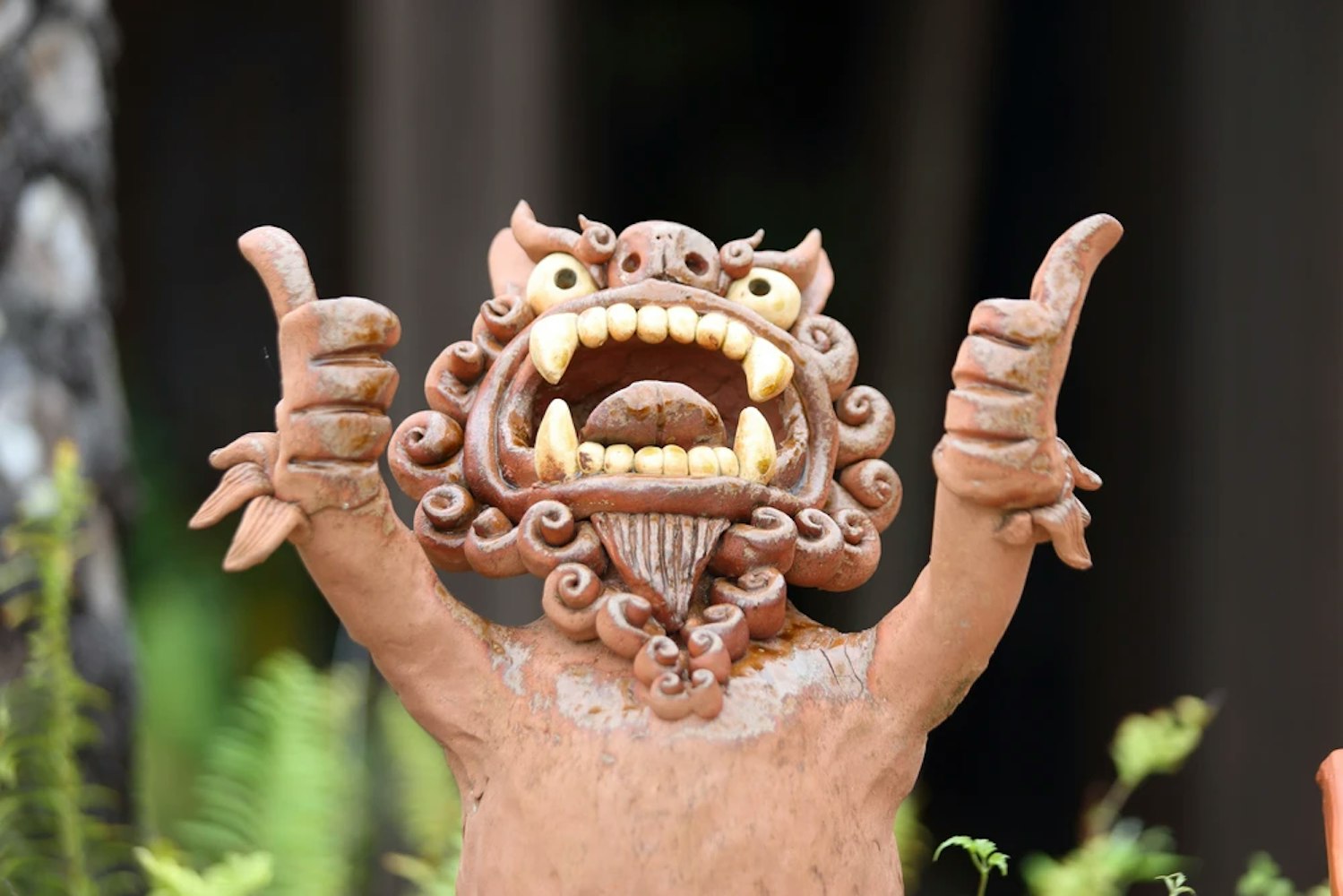
The history of Shisa as Okinawa's guardian dog is intertwined with the island's interactions with China and mainland Japan. Originating from the Chinese guardian lions, these mythical creatures were adapted into Okinawan mythology through cultural exchange along the Silk Road.
The earliest known Shisa is said to have been a gift from a Chinese emissary to an Okinawan king, an emblem of protection and good fortune. Over centuries, the depiction of Shisa evolved, incorporating elements of both lion and dragon, embodying strength and guardianship in local folklore.
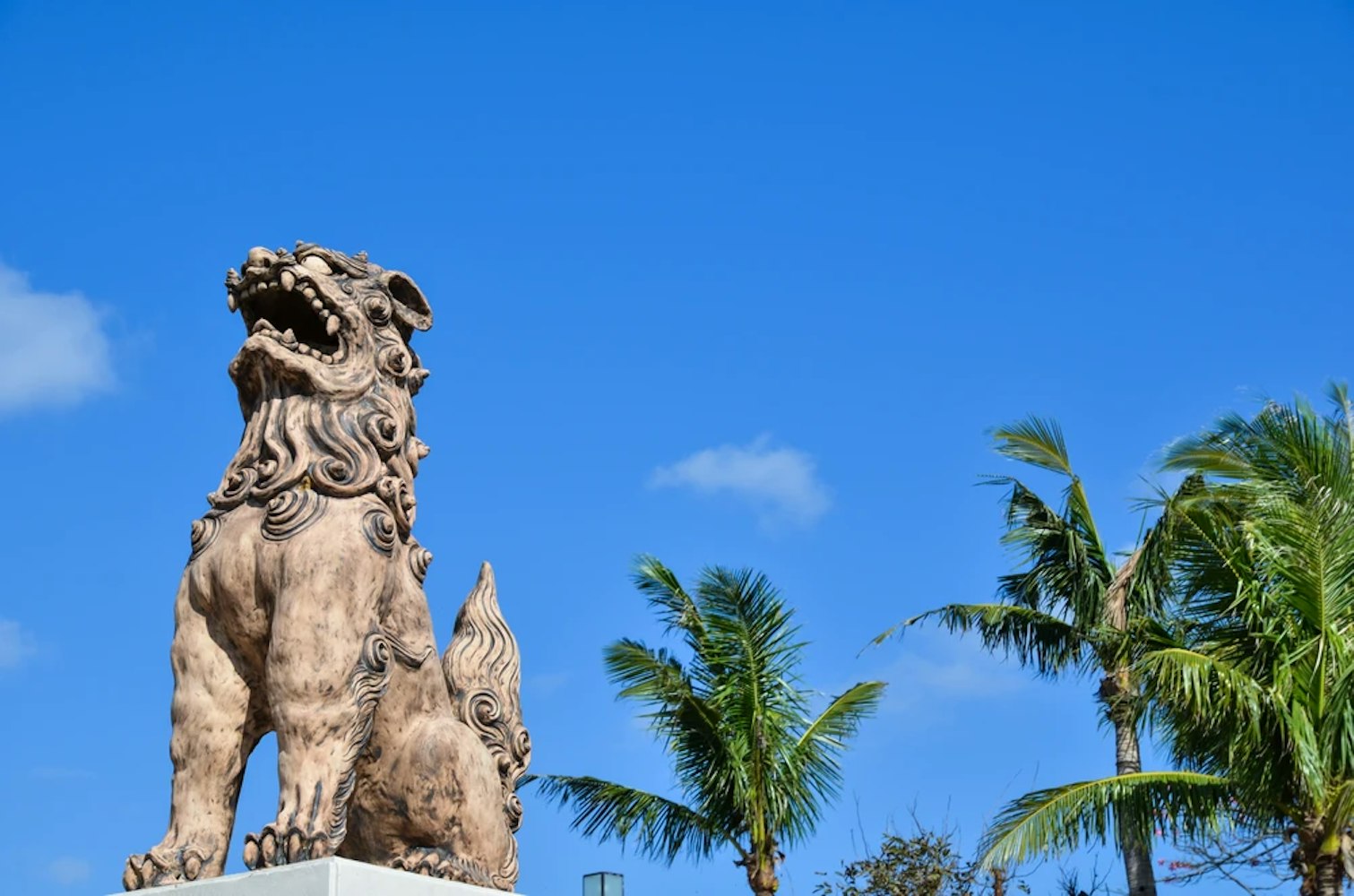
The Shisa of Naha Gate is a prominent feature overlooking the entrance to the old royal palace in Okinawa. This pair of Shisa statues serves as a symbolic guardian at one of the island's most historically significant sites.
Strategically placed, they watch over the gateway to the palace, embodying the traditional role of Shisa as protectors against evil spirits. Their presence not only enhances the cultural aura of the site but also offers visitors a striking first impression of the rich heritage and mystique of Okinawan tradition.
The Giant Shisa at Kokusai Street is an imposing and popular attraction for tourists visiting Naha, Okinawa. Situated prominently on Kokusai-Dori, these massive Shisa statues stand over three meters tall and are known for their striking appearance, making them a favored spot for photos.
They symbolize protection and are a central feature that captures the essence of Okinawan cultural heritage, drawing visitors worldwide to this vibrant shopping and entertainment district.
The Guardian Shisa of Shuri Castle symbolizes the rich historical depth and cultural significance of the Ryukyu Kingdom, which thrived as a hub for international trade and diplomacy. Positioned at the grand entrance of Shuri Castle, these statues served as mythical protectors and potent symbols of royal authority and cultural exchange.
The Shisa at Shuri Castle reflects the architectural and artistic influences that the Ryukyu Kingdom absorbed through its vibrant interactions with China, Japan, and Southeast Asia. Today, these statues continue to be revered. They embody the enduring legacy of the Ryukyu Kingdom and its historical significance within the broader narrative of Okinawan and East Asian history.
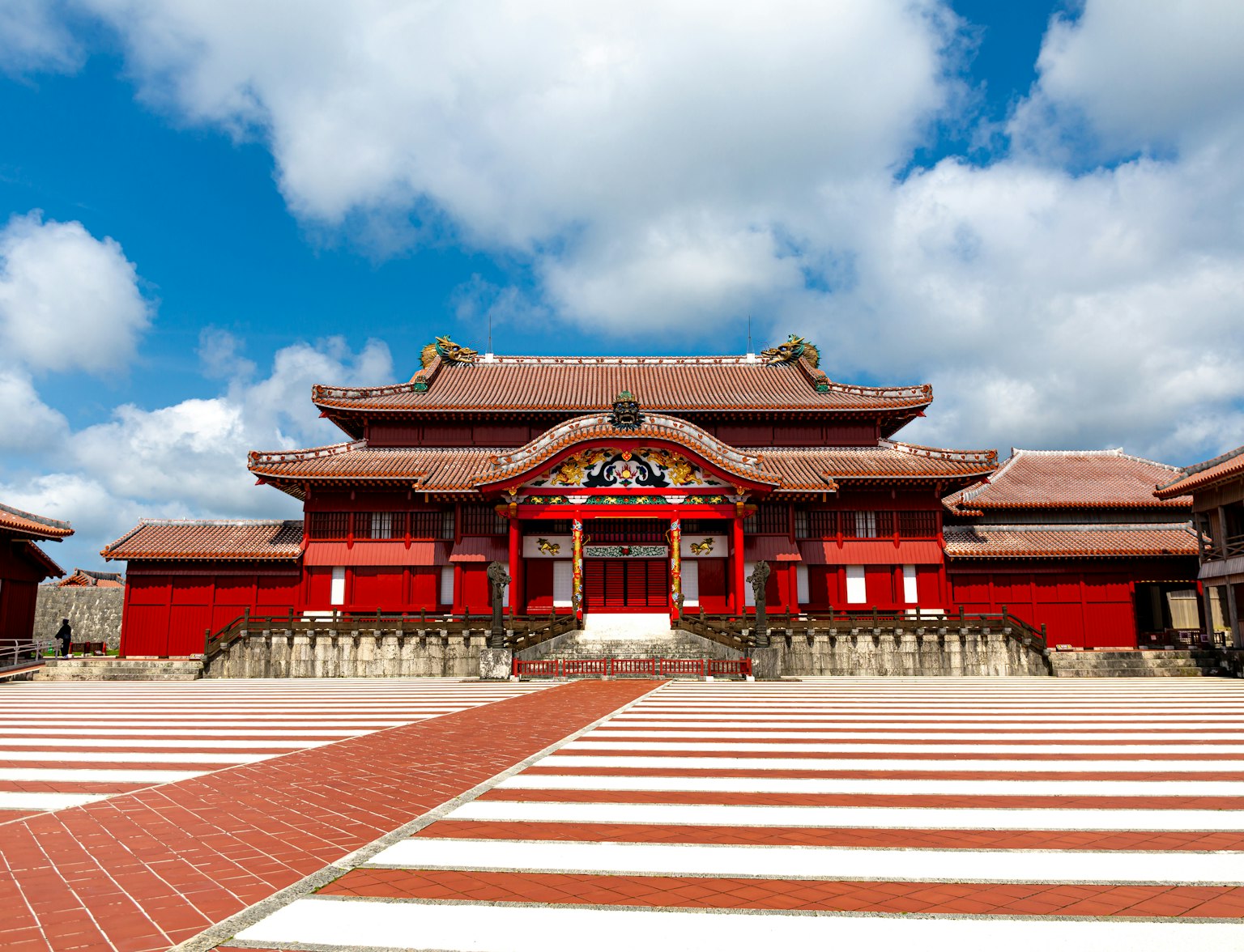
Discover the gems of Okinawa on our sightseeing bus tour!
The Tomori Lion Shisa, known for its unique style, is one of Okinawa's most famous and historically significant Shisa statues. Erected in 1689, this statue is the oldest and among the largest Shisa, serving as a guardian against disasters, specifically fires that are historically plaguing the village of Tomori.
Its imposing presence is complemented by its location on a hill facing Mount Yaese, following advice from a feng shui master to ward off fire dangers. The Tomori Lion Shisa also bears marks of history, including bullet holes from the Battle of Okinawa. These add to its storied past and make it a poignant site for locals and tourists.
The Shisa on Kouri Bridge serves as a symbolic protector for those crossing Okinawa's longest bridge and enhances the area's tourist appeal. Kouri Bridge, connecting the main island of Okinawa to the smaller Kouri Island, is a significant architectural feature stretching an impressive 1,960 meters.
This bridge is a critical infrastructure piece and a popular spot for tourists seeking picturesque views of the surrounding ocean and islands. The presence of Shisa adds a cultural and mythological layer to the experience, embodying the local traditions of guardianship and spiritual protection as visitors transition from one island to the other.
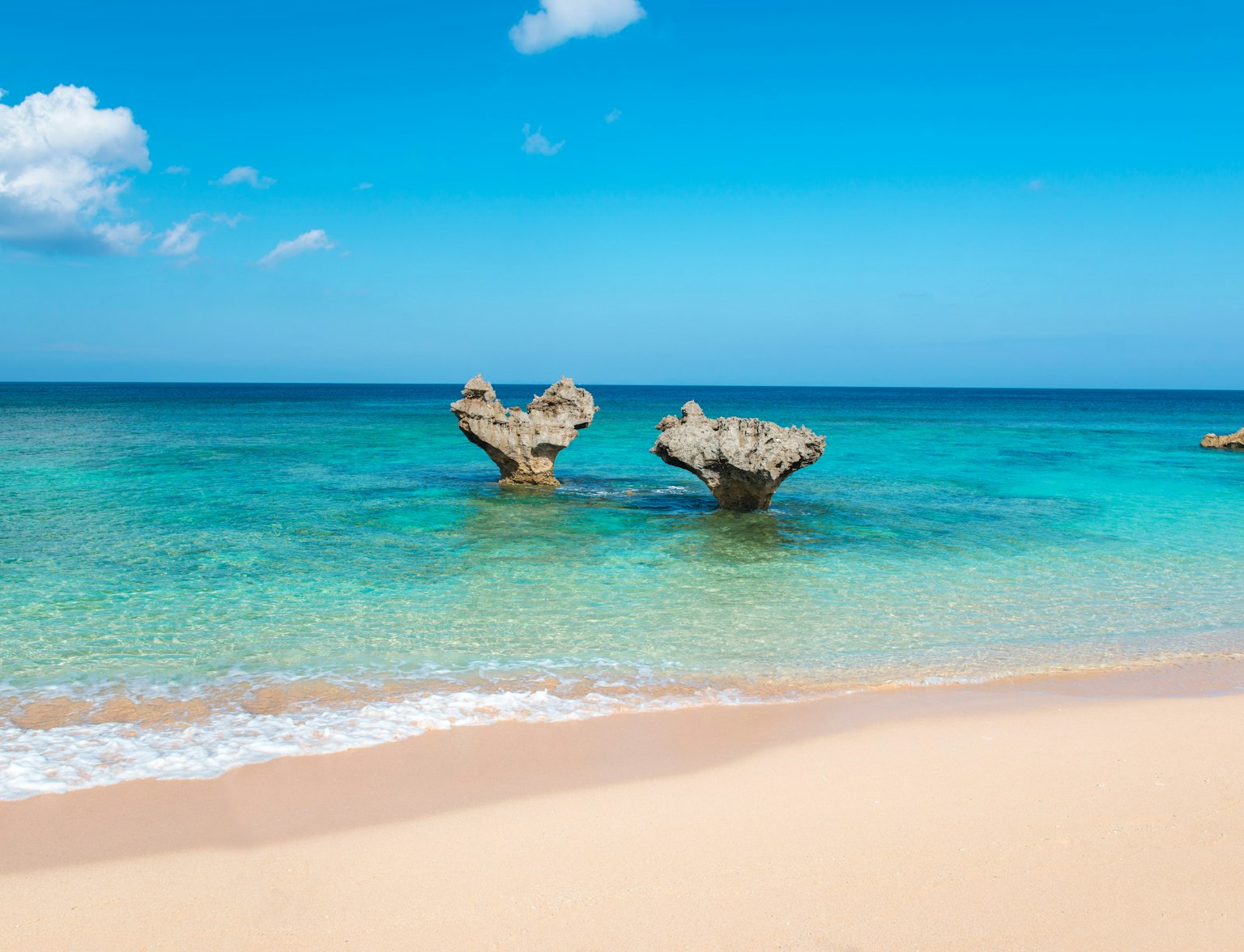
Wander Kouri Island with this tour.
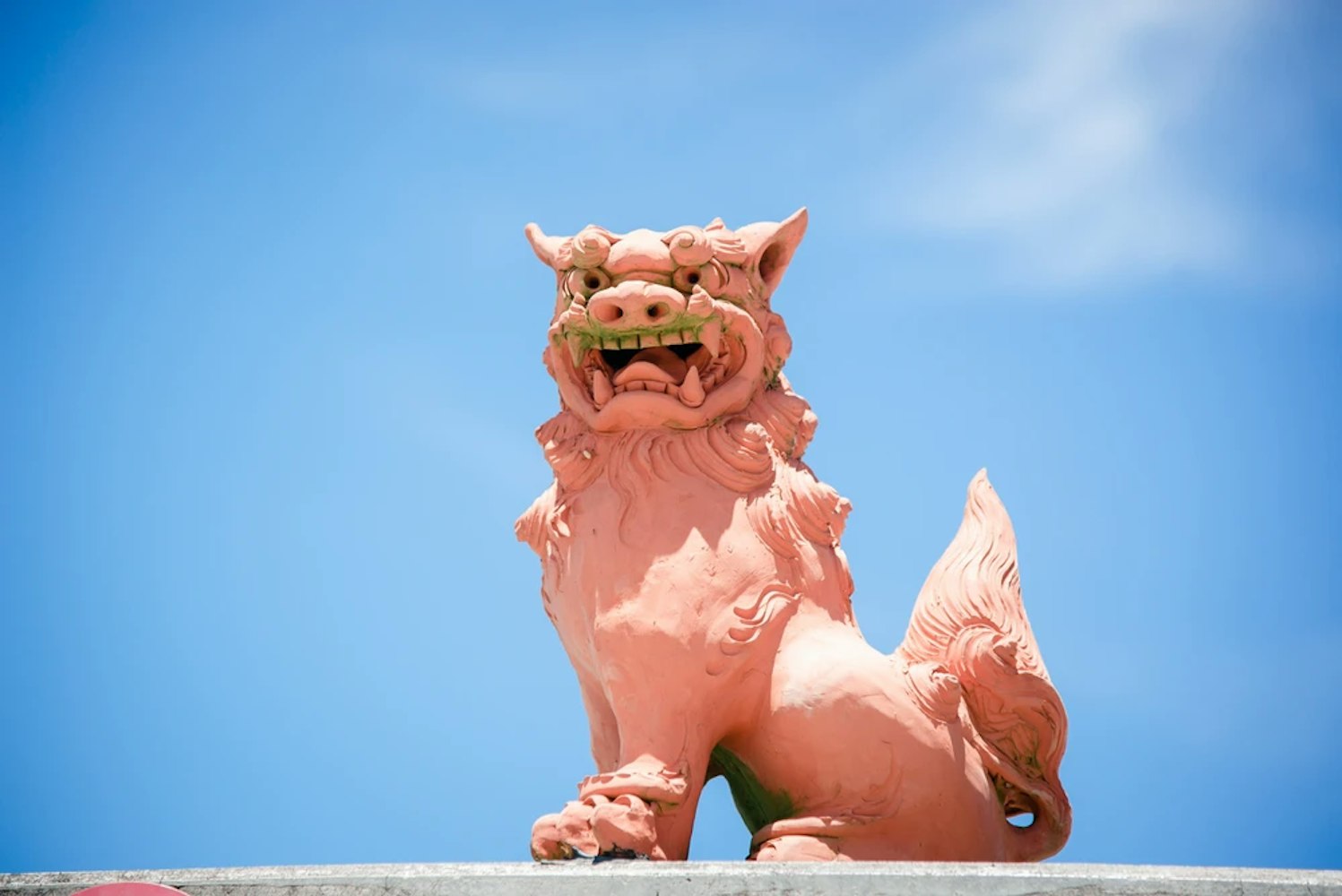
According to many folktales, the legend of Shisa began when a monstrous sea dragon threatened the village of Madanbashi. The local noro (priestess) advised the king to place a Shisa statue facing the Naha Port Bay.
Miraculously, this guardian deity calmed a storm that was believed to have been brought by the giant dragon, saving the village. This tale cemented the Shisa's role as protectors, capable of keeping in good spirits while warding off evil.
Their presence in Okinawa today continues to be a testament to this legendary protection.
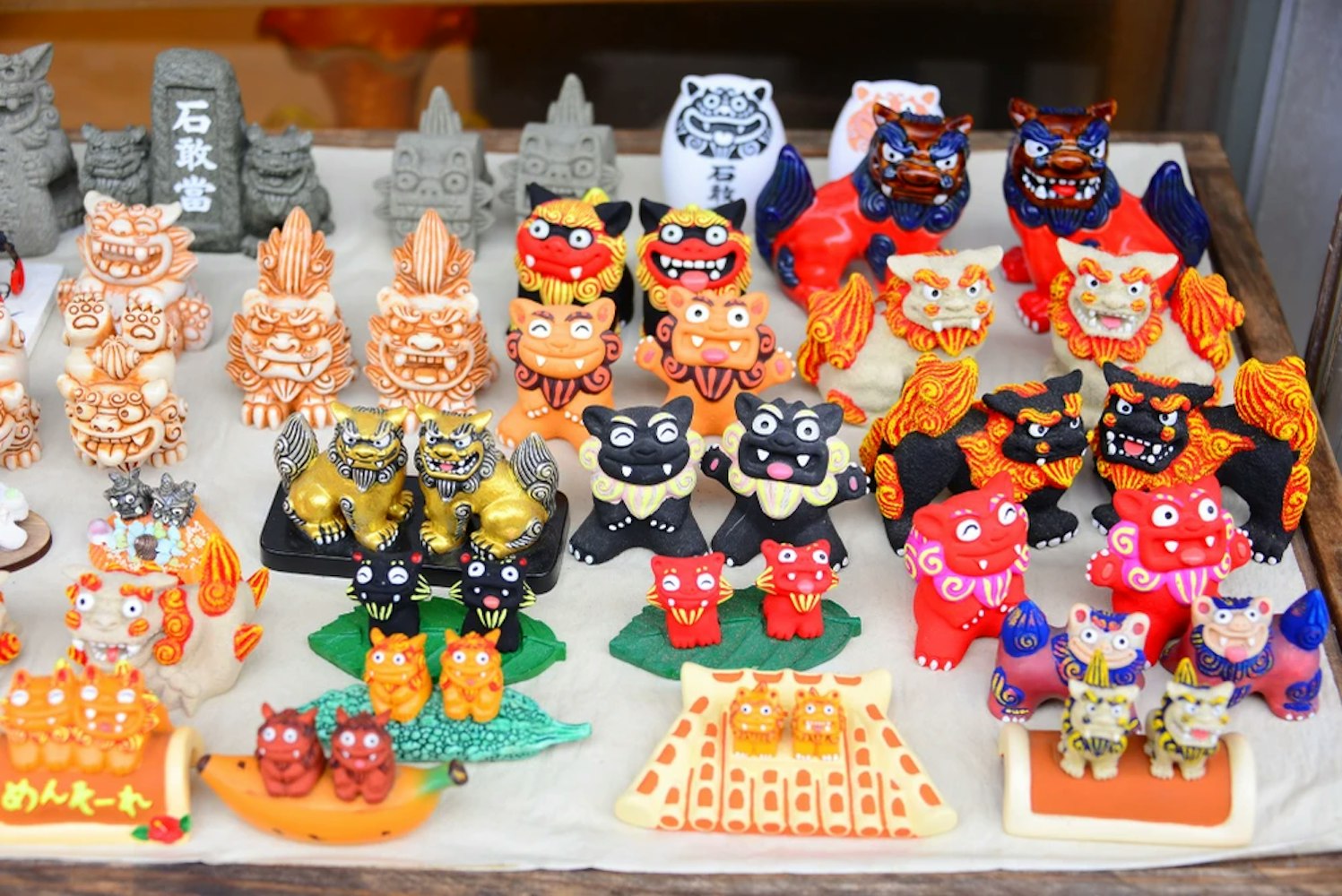
Shisa comes in various forms, each symbolically poised to attract good spirits or repel negative energies. The most common types are the open-mouthed male Shisa, believed to ward off evil aggressively, and the closed-mouth female Shisa, thought to keep in the good fortune.
Some Shisa mirrors the features of a dragon's tail and scales, while others resemble the traditional guardian lions with a fanged beast's demeanor. These variations allow individuals to choose their own Shisa, reflecting personal protection needs and aesthetic preferences.
Palace Shisa (Miyajishi): Found at historic sites like Shuri-Jo castle, these stone Shisa are usually positioned in pairs and symbolize authority.
Village Shisa (Sonrakushishi): Positioned at village entrances, these are typically solitary figures representing guardians against calamities.
House Shisa: The most common type is found at residences as a Shisa figurine and sold in souvenir shops. It serves as protective amulets for homes.
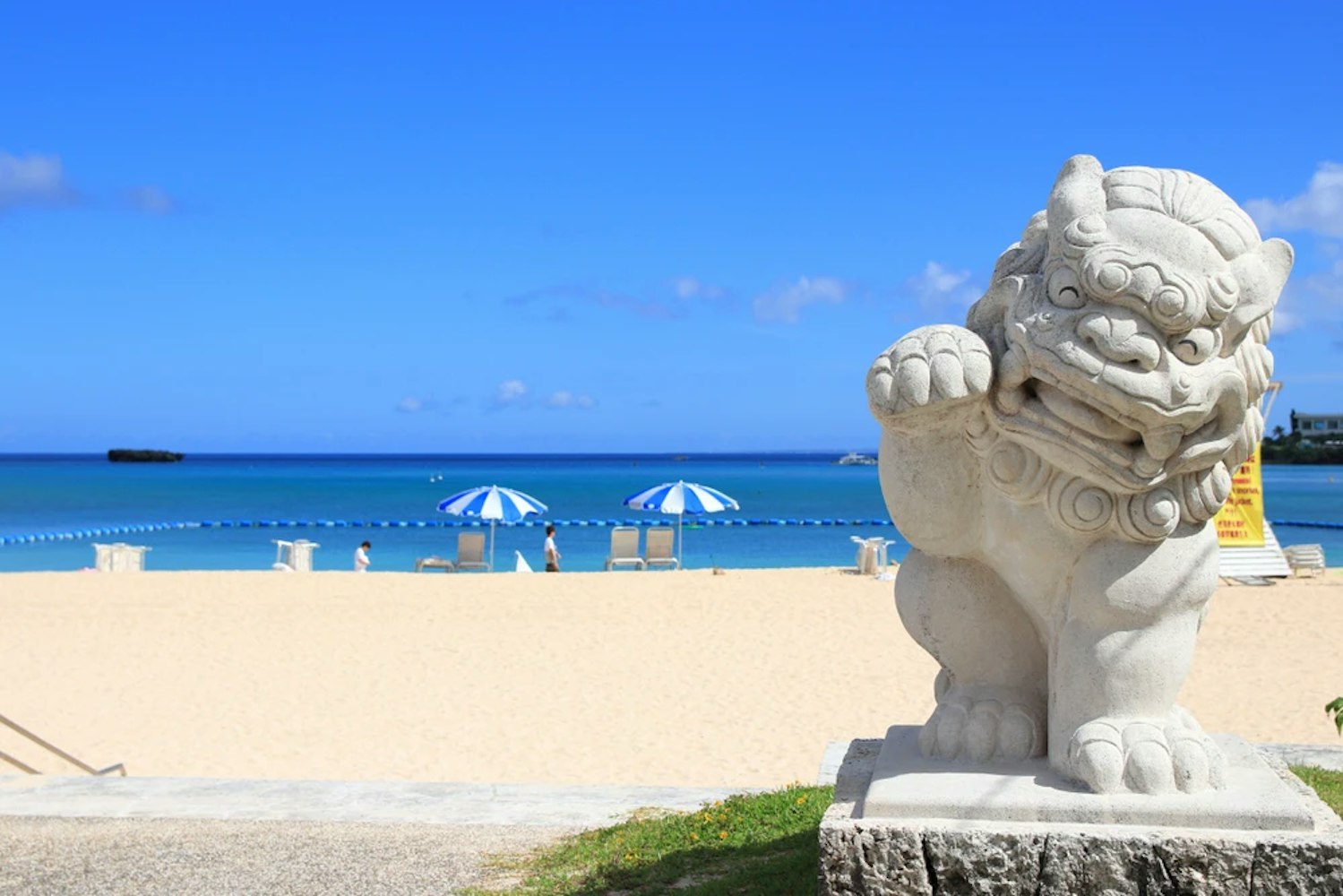
Shisa figures are a prominent feature in Okinawa's tourism landscape, greeting visitors at crucial locations like Naha Airport and along the bustling Kokusai Street. These statues range from tiny charms to impressive large stone shisa statues, available in numerous souvenir shops.
Tourists are drawn to their rich history and mythological significance, often purchasing Shisa figurines as keepsakes. This tradition allows them to take a piece of Okinawan culture home and helps spread the tales of these guardian creatures globally.
The widespread presence and cultural importance of Shisa contribute significantly to Okinawa's identity as a unique tourist destination.
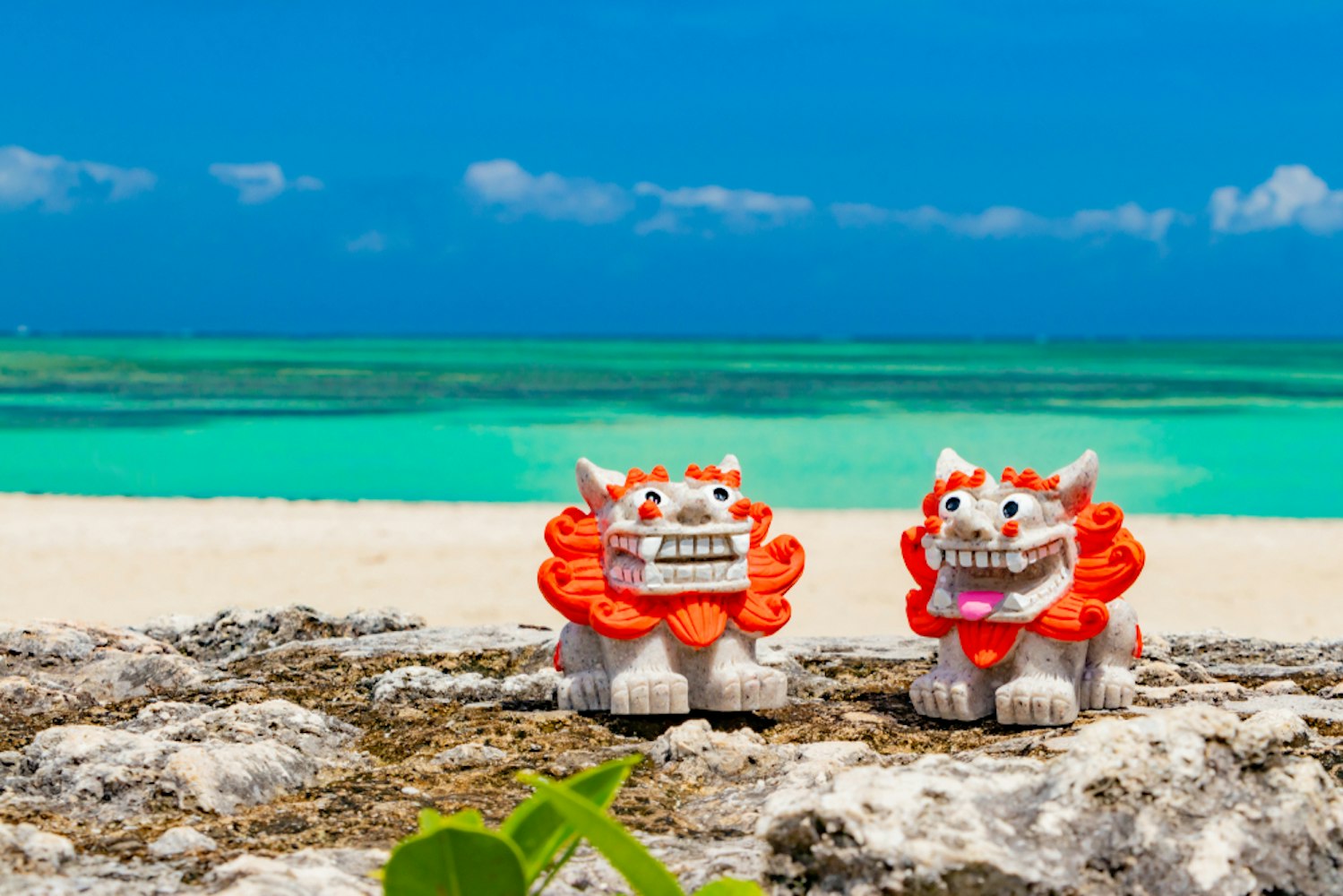
Traditionally, Shisa is positioned in pairs at the entrances of homes or public buildings to maximize their protective powers. The open-mouthed Shisa, typically the male, is placed on the left side to ward off evil spirits, while the closed-mouth Shisa, usually the female, sits on the right to keep in the good fortune.
Positioning is vital; incorrect placement can disrupt the balance of spiritual protection these guardian figures offer.
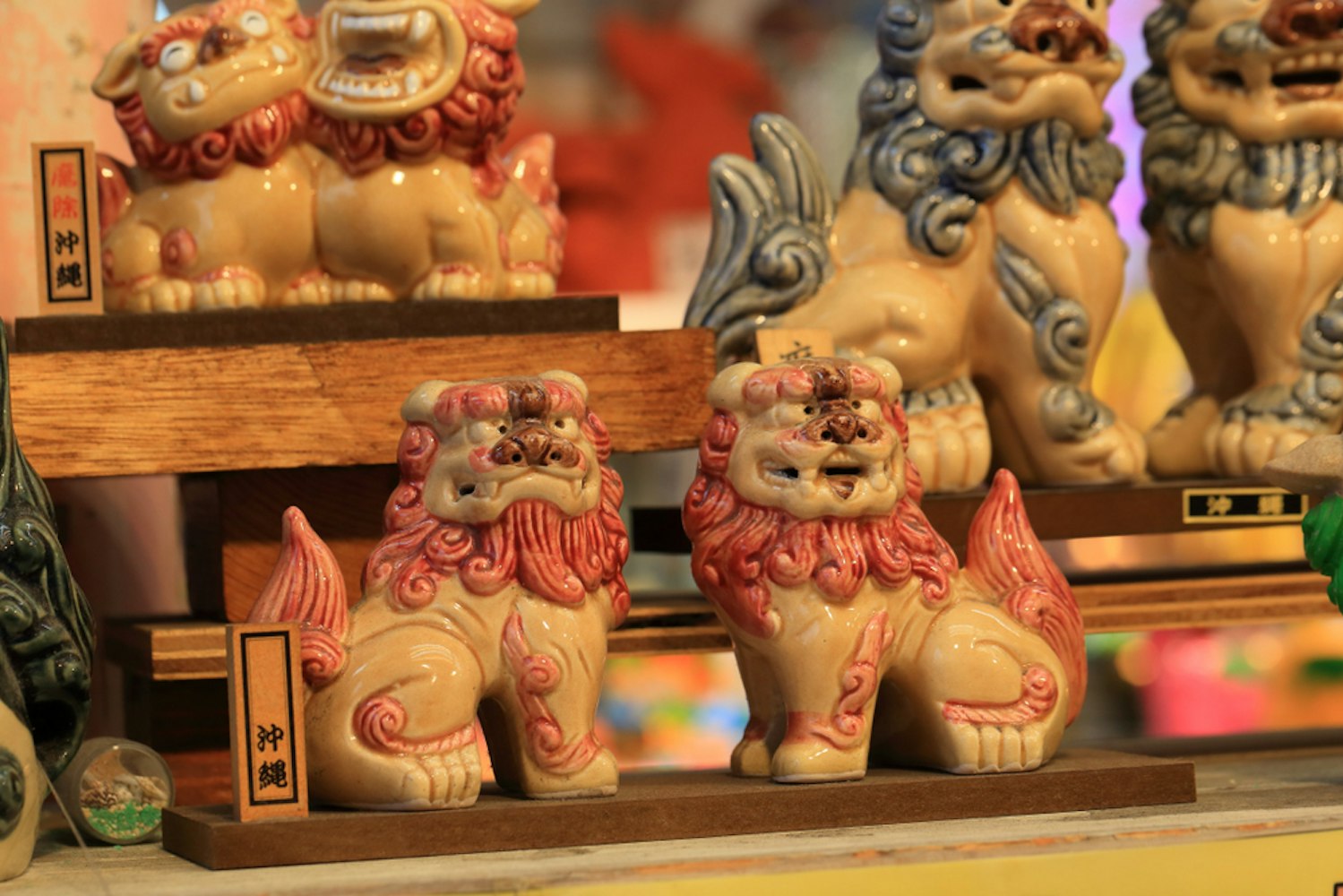
Shisa has transcended their traditional roles to become prominent symbols in modern Okinawan culture and beyond. They appear in various forms of media, including films, books, and as motifs in fashion and design.
Modern interpretations of Shisa often blend contemporary art styles with traditional elements, reflecting a fusion of past and present. These depictions continue to celebrate the Shisa as vital cultural icons, evolving yet steadfast in their protective duties.
The Shisa of Okinawa are more than just statues; they are a vibrant part of the island's cultural and spiritual landscape. They encapsulate Okinawa's historical depth and artistic heritage as guardians against evil and bringers of good luck.
Whether encountered on the eaves of a traditional home or as a figurine in a bustling street market, Shisa continues to be revered. They embody the enduring spirit and rich folklore of the Ryukyu Islands.
Their legacy, perpetuated through stories and sculptures, remains a fundamental element of Okinawan identity, cherished by locals and admired by visitors worldwide.
